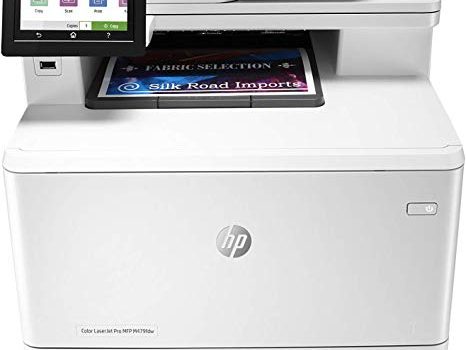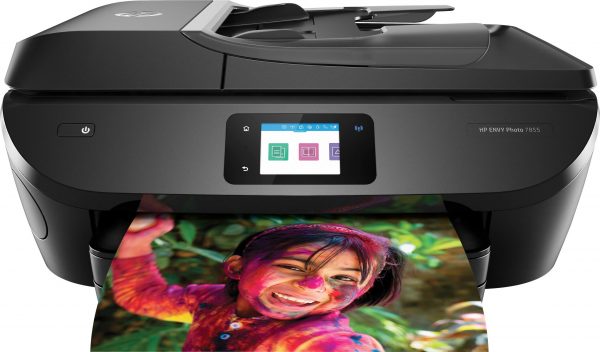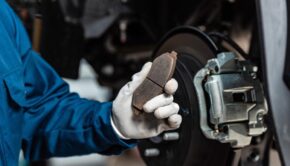Laser Printer Guide in 2020
Printers, by the name itself we can guess that an object used to print something is called printer. When we describe technically, a printer is a peripheral device that is attached to a computer system that can print or can make the hard copies of anything that you see on your monitor screen. By the passage of time, the printers have been evolved in many ways. It can be in size, the technologies they use, or the efficiency. The first mechanical printer was designed by Charles Babbage in the 19th century, but only on paper. It was built in 2000. The printers have been evolved very rapidly. When we talk about the first electronic printer, it was invented by a Japanese company Epson. The name of this printer was EP-101. Nowadays, there are plenty of printers that are available in the market. The few types of printer are:
- 3D printer
- AIO (all-in-one) printer
- Dot-matrix printer
- Inkjet printer
- Laser printer
- LED printer
- MFP (multifunction printer)
- Plotter
- Thermal printer
What is a Laser Printer?
The first laser printer was developed by Xerox PARC by Gary Starkweather and released in 1971.
As the name of the printer is, it uses Laser technology to print anything.
Nowadays, laser printers are ubiquitous in schools, offices, at homes. This is because these printers are straightforward to use efficient and work really fast. This printer can finish huge tasks in minutes. But also it takes a massive amount of power to work, that’s why it’s never recommended to connect your laser printer to yours.
How does Laser Printer work?
- Cleaning: This is the first and foremost step of a laser printer. In this system, the printer cleans the prior information or commands or images that are provided to it to print.
- Conditioning: A uniform, positive charge to the photoreceptor drum applied by a corona wire.
- Writing: A laser is used to draw out the image on the drum carved out positive charges, and negative ones are left behind. A light source is used by the laser inside the printer like LED or LCS (light crystal shutter).
- Developing: With a positive, the toner in the ink roller is ionized, attracting it to negatively charged areas on the drum.
- Transfer: By a positively ionized field (created by a transfer corona wire) or by a transfer roller in newer printers, the toner of the drum is transferred to the paper. The toner is not yet permanently set on the paper, and it has to go through the last step.
- Fusing: By two fuser units, heat and pressure are applied to the paper and toner. The toner pressed into the paper like doing an iron-on transfer to a T-shirt when it melts.
The pros of laser printers
More efficient use of toner – On toner use, a laser printer is more effective and efficient, compared to inkjet printer usage of ink. Compared to inkjet printers, the cost per page of a laser printer is less, which means the total lower cost of ownership over the life of the printer.
- Faster print speeds: A laser printer is very quick even with a large number of commands.
- Less mess to clean up: The toner does not stain like ink, and the laser printer is easy to clean.
- Excellent print quality: The laser printer can produce some fantastic quality prints.
The cons of laser printers
- Higher toner cartridge cost: The cost of the toner is very high.
- Larger physical size: While inkjet printers are small and portable, but laser printers are not small and are not easy to carry.
- It can be noisy: Laser printers are also known for producing sound while processing.
- High cost for color: They can be more costly when they are used to print colored photos.
What is the Inkjet printer?
This printer prints by spraying streams of quick-drying ink on paper. It is the most popular printer for home computer users. The ink cartridges are disposable, which is used to store ink, the different cartridge is used for each of the major colors. CMYK(cyan, magenta, yellow, and black) are usually the colors.
Although inkjet printers themselves are not much expensive, its very time consuming, the ink cartridges used in the printer can increase the overall cost of the printer.
There are usually three types of printers
- Basic document printer.
- Photo printer.
- Copier, scanner, and printer
Pros of Inkjet printer
- Smaller Size – Inkjet printer is the small-sized printers; this feature makes it more portable and easier to carry. But on the other hand, All-in-One inkjet printers are a bit larger though they are still smaller than a laser printer.
- Low Cost – Laser printers are costly when compared to an inkjet printer. The price of Ink cartridges ( Ink cartridges for inkjet printers) has become cheaper in price in the last couple of years. Generally, the ink of inkjet printers is half the price of a laser toner cartridge.
- Cartridges are easy to replace – When it comes to replacing a cartridge in a laser printer, it is very easy and quick.
- High-quality photos – Inkjet printers can print great quality photos with amazing results, printing pictures with vivid colors, high contrasts, and no pixilation is done virtually. You don’t have to visit a professional photographer to print your photographs.
The cons include
- Less efficient ink use – When it comes to printing, the inkjet printers have a higher cost per page, due to their rather inefficient usage of ink. Laser printers are more efficient with their toner than inkjet printers.
- Slower processing of large documents – An inkjet printer takes a bit longer while printing a document with multiple pages than a laser printer.
- Messy to clean – When it comes to clean an inkjet printer, its very hectic work to do. Inkjet cartridges can sometimes leak, and whatever it comes in contact with can stain almost, including clothes and hands.
Laser Printer vs. Inkjet Printer: Which One To Buy?
When we go buy a printer, one must go through each and every pros and cons of both printers. This will make it easy to choose the best one. The inkjet printer usually wins that battle, when it comes to the cost, we have to pay. However, if we want a printer that is significant in the long run or long term cost of ownership, then laser printers should be considered.










![Top 8 New High Tech in Deer Hunting Gear and Gadgets [Infographic]](https://technofaq.org/wp-content/uploads/2017/01/deer-hunting-technology-150x150.jpg)







